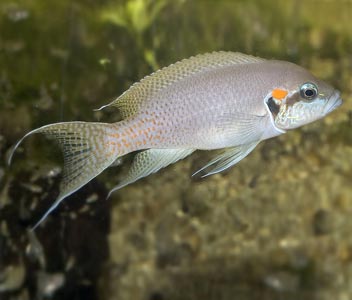Description
The Princess Cichlid (Neolamprologus brichardi) is a popular and elegant species from Lake Tanganyika, renowned for its striking appearance and fascinating social behaviour. Often called the "Fairy Cichlid," it is prized by aquarists for its graceful fins and complex breeding habits.
Features of Princess Cichlid
-
Grows up to 12 cm in length
-
Slender, elongated body with a pale silver base colour
-
Distinctive long, flowing dorsal and anal fins edged in black
-
Exhibits a gentle yet territorial temperament
-
Known for cooperative breeding and complex social structures
The Best Aquarium Size for Princess Cichlid
A minimum aquarium size of 120 litres is recommended to provide enough space for a small group and territory establishment.
Tank Mate Compatibility for Princess Cichlid
Best housed with peaceful to moderately aggressive species from Lake Tanganyika, such as:
Avoid overly aggressive or large fish that may stress the Princess Cichlid.
Diet for Princess Cichlid
Omnivorous diet including high-quality flakes or pellets, supplemented with live or frozen foods like brine shrimp, daphnia, and bloodworms.
Aquarium Setup for Princess Cichlid
Aquarium Filtration
Efficient biological and mechanical filtration is necessary to maintain clean, oxygen-rich water.
Aquarium Plants
Plants are not commonly used in Tanganyika tanks; however, hardy species or artificial plants can be added with care.
Aquarium Lighting
Moderate lighting to replicate natural conditions without causing stress.
Aquarium Heating
Maintain water temperatures between 24°C and 27°C for optimal health.
Aquarium Substrate
Use sand or fine gravel substrate to mimic their natural rocky lakebed habitat.
Aquarium Decorations
Rocky aquascapes with caves, crevices, and hiding spots are essential for territory establishment and breeding behaviour.

